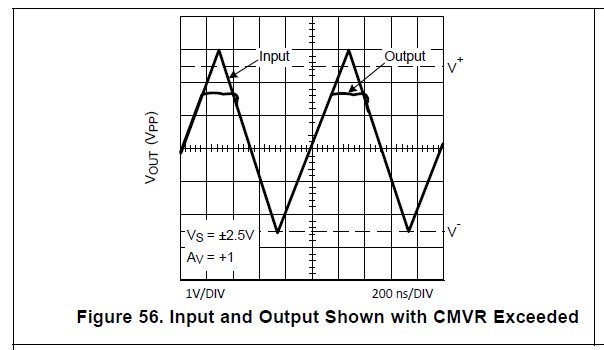I have a circuit using an LMH6644 as a 4-way unity buffer which is marginal in terms of input common mode range. The positive power supply to the LMH6644 has a minimum theoretical value of 3.26 V, and the input to the buffer has a maximum theoretical value of 2.35V. This violates the input common mode range of the LMH6644 - which could be as little as V+ - 1.4 at temperature extremes = 1.86V.
My question is - what is the expected behaviour of the LMH6644 under these conditions and in this circuit topology? I can accept truncated output voltage, but not other gross waveshape distortion, oscillation or phase inversion.
I realise that the best way to do this is using a higher input power supply rail, but I would obviously like to avoid this if possible.


